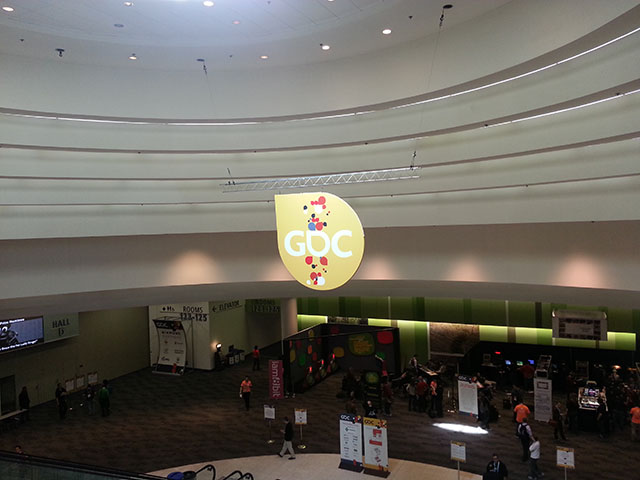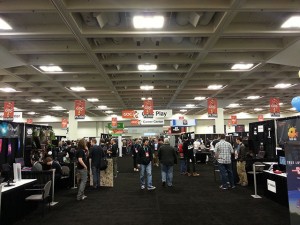
GDC ’14 – Bustling with activity at the Career Center.
This past week, I had a chance to attend the Game Developers Conference in San Francisco, a huge annual conference for game producers & developers. As this was my first GDC, I was thrilled to have the opportunity to meet professionals in the gaming industry, attend seminars on game development, as well as seeing the latest games and technology on display.
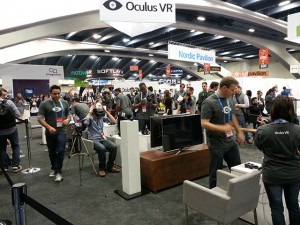
GDC ’14 – GDC attendees getting an opportunity to try out Oculus Rift.
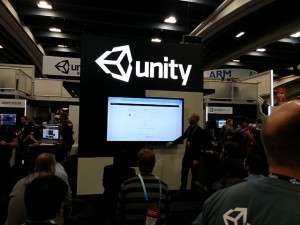
GDC ‘ 14 – Unity promoting the Unity gaming engine to game developers.
While the first two days of GDC came and gone with little fanfare, things became a bit more interesting when the Career Center and the Expo Floor opened up on Wednesday. Companies like Oculus and Unity were in full force on the floor. Oculus, riding on the growing interest into virtual reality technology, were demonstrating the full capabilities of what the Oculus Rift VR headset had to offer for the next generation of games. As for Unity, they were heavily touting it’s capabilities as a versatile gaming engine that supports most (if not all) current gaming platforms, as well as high-profile games that were developed with Unity.
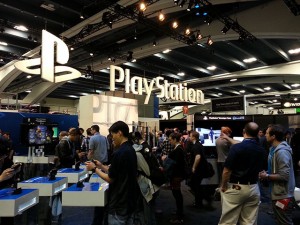
GDC ’14 – The Sony PlayStation exhibit at GDC.
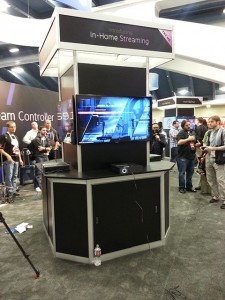
GDC ’14 – Valve’s exhibit at the GDC.
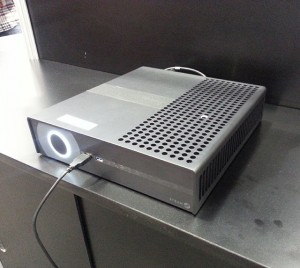
GDC ’14 – Valve’s SteamBox, a PC running SteamOS.
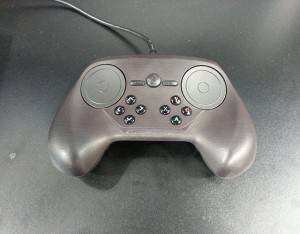
GDC ’14 – The controversial SteamOS controller.
Some of the biggest announcements at GDC included Sony’s Project Morpheus, a VR headset similar to the Oculus’ Rift headset. Another large announcement was Valve’s unveiling of the latest version of the SteamOS controller, considered to be controversial due to it’s unorthodox game controller layout. Along with the new controller, Valve was also demonstrating the SteamOS and the SteamBox PCs over at it’s booth.
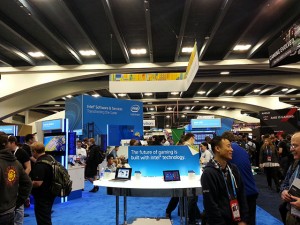
GDC ’14 – Intel at GDC, promoting it’s Iris Pro GPU’s abilities.
Hardware companies like Intel, AMD, and nVIDIA were also at GDC, demonstrating what their hardware can do for game developers. With Intel, they were promoting Iris Pro (Haswell’s integrated GPU) and it’s gaming performance. The message that they wanted to deliver was that the Iris Pro was capable of running the latest games (albeit at lower settings compared to nVIDIA & AMD’s GPU solutions).
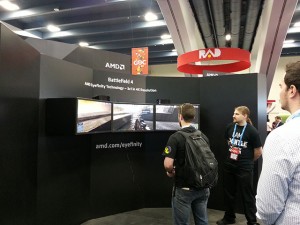
GDC ’14 – AMD demonstrating EyeInfinity with Battlefield 4.
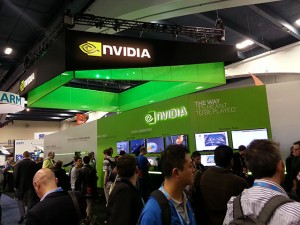
GDC ’14 – nVIDIA’s exhibit at GDC.
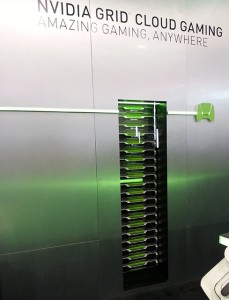
GDC ’14 – nVIDIA’s GRID rack server on display.
Over at nVIDIA’s booth, they were promoting their latest Tegra 4 SOC solution, as well as nVIDIA GRID, a cloud game streaming service that nVIDIA is currently promoting.
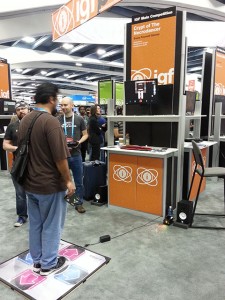
GDC ’14 – A GDC attendee playing Crypt of the Necrodancer with a DDR mat.
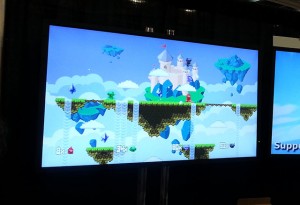
GDC ’14 – Bit Bros., a 2D fighting game that plays similarly to Nintendo’s Smash Bros. series.
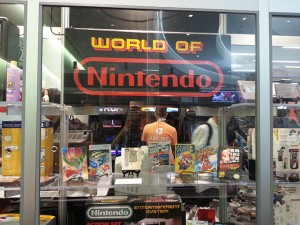
GDC ’14 – The Videogame History Museum Exhibit at GDC.
Outside of the Expo Floor, I encountered an interesting exhibit, the Videogames History Museum. It was an exhibit dedicated to the history of arcade and console gaming, with classic consoles like the NES, SNES, Atari, N64, Genesis, GameCube, Game Boy, Virtual Boy, etc. on display. There were several stations where gamers could reminisce and play these classic consoles; I was able to get a chance to play E.T.: Phone Home (a game that was largely responsible for the 1983 video game crash), as well as a few rounds of Super Smash Bros. Melee. The exhibit was definitely a trip down nostalgic road for me.

GDC ’14 – Game Developer’s Choice Awards
On Wednesday night, the Game Developer’s Choice Awards 2014 was held. It’s similar to the People’s Choice Awards, except that the winners here are games and their developers. A significant portion of the GDC Awards were dedicated to indie games, showcasing how far indie games have come in recent years. What I found surprising is that a large amount of the awards were given to the indie game “Papers, Please”, winning five awards for categories such as Best Narrative, Visual Art, etc. Another big winner was Naughty Dog’s “The Last of Us”, a great game that rocked the gaming world last year.
With GDC ’14 concluded, I am still in awe over all the announcements, games/tech that were on display, and more importantly, the advice I received from game designers and professionals. As I have started the journey back into software development in the past year, I was initially overwhelmed, as I felt at times if I could ever get back to speed with what game companies are looking for in developers these days. However, I also gained insight and a better direction of where I should focus my software development skills on.
